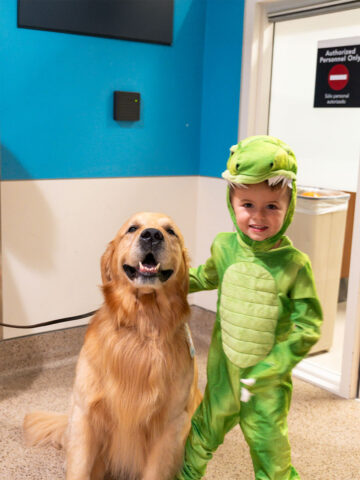Art therapy can be a useful tool for children to communicate, learn and express their emotions. Not only can art therapy benefit kids and teens who are experiencing mental health challenges, but the therapeutic benefits of artmaking can also be incorporated into every child’s routine to promote mental and emotional wellness.
Kathryn Scarim, a board-certified art therapist at the Cherese Mari Laulhere Mental Health Inpatient Center, creates art therapy programming, and facilitates individual, group and family sessions for patients in a fully functioning art studio located inside the center.
The mental health inpatient is exclusively dedicated to the treatment of children ages 3 to 17 years with mental illness who are in immediate risk of hurting themselves or others. It is the only inpatient facility in Orange County that can treat patients younger than 12.

Here, Kathryn explains the link between art and emotional expression and how to practice artmaking at home.
How art can benefit your child’s mental health
“Children communicate and learn through art and play,” says Kathryn. Art therapy offers all kids and teens — those who may identify as artists and those who do not — a space for emotional exploration through the creative process.
The artmaking process can often bypass defense mechanisms that prevent kids and teens from saying how they feel aloud. It has the power to externalize and transform their inner experiences — giving them the opportunity to express their thoughts or feelings while making art.
How to incorporate art into your child’s routine
Art can be used in a child’s routine in a couple of different ways, says Kathryn.
Art as therapy has benefits that are purely driven by the process of making art like doodling, coloring, designing mandalas and practicing origami. These activities can be done individually, in a group and at home. Using these art practices can be a coping skill for stress, anxiety or depression. Artmaking can help kids process big emotions and practice mindfulness.

Art therapy has the same benefits; however, the art activity is done in session with an art therapist, says Kathryn. The art therapist facilitates identifying and processing difficult emotions that arise while creating. An art therapist can also provide specific art directives tailored to a patient’s mental health needs and functioning levels.
At-home art project ideas and materials
All types of art mediums can be used in art therapy.
At the mental health inpatient center, we use crayons, markers, oil pastels, paint sticks, watercolor, tempera and acrylic paint regularly, says Kathryn.
At home, you don’t need any fancy art materials — use what you have like printer paper, crayons, pens, markers and more. With a quick online search, you can find plenty of at-home art project ideas.
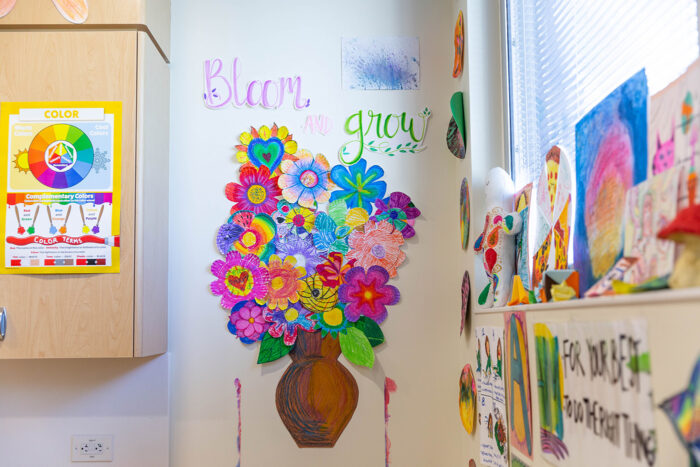
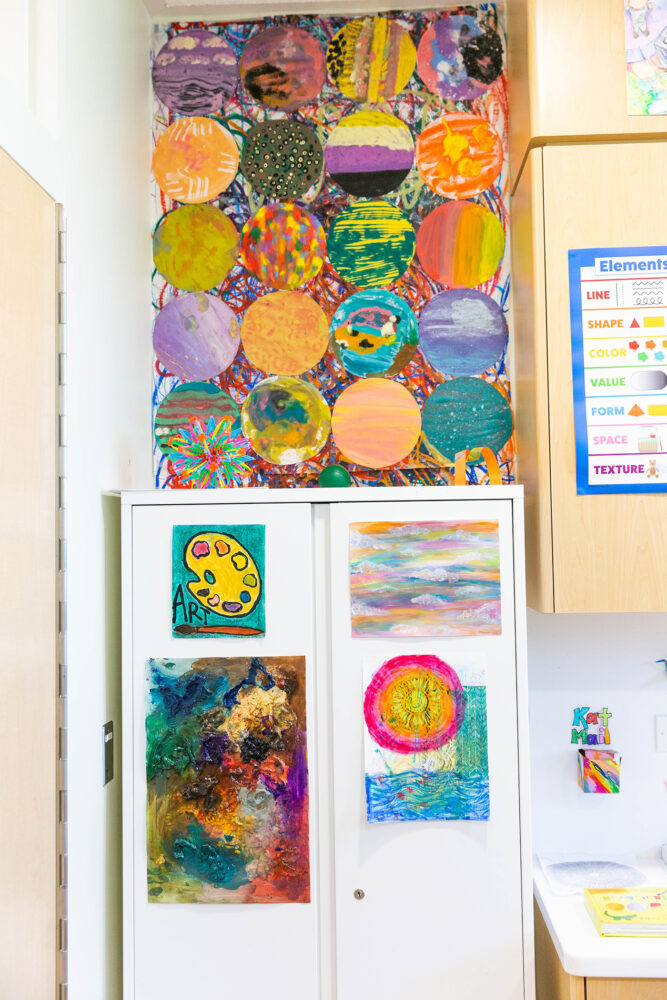
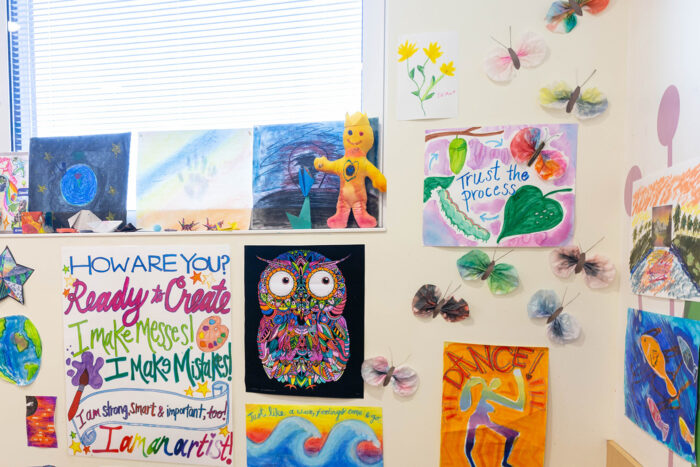
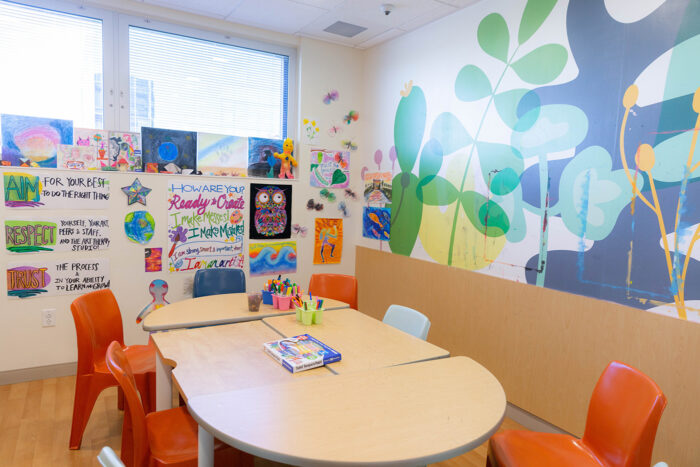
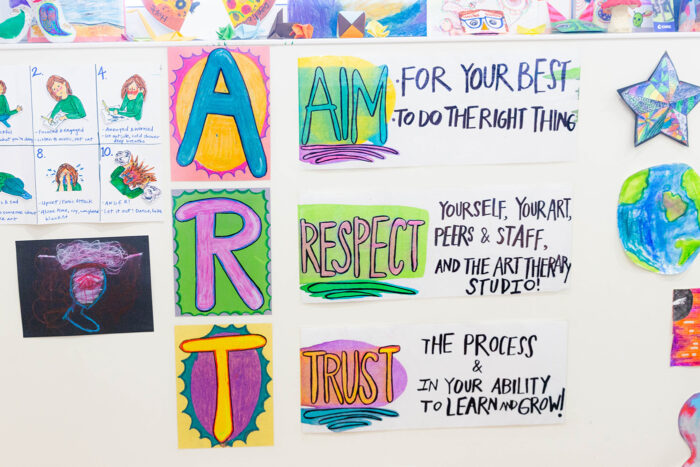
Here are a few ideas to get you started, but you can let your kids’ imagination lead the way:
- Painting rocks from the backyard.
- Drawing with markers on coffee filters.
- Create mosaic artwork using ripped pieces of construction paper or pages from newspapers or magazines.
- Splatter painting on pieces of paper.
No matter what art project or medium you choose to use, it’s important to remember to focus on the process of making art instead of putting pressure on what the final product looks like. A child’s art does not need to be aesthetically pleasing for the child to benefit from creating it.
Remember that this isn’t art class — encourage any and all art expressions. Approach artmaking from a place of curiosity rather than judgement.
Kathryn says, “Everything you make is important because YOU created it,” which serves as a great reminder for both children and their parents.
How can art help my child who is going through mental health challenges?
Art therapy can be particularly helpful for (but is not limited to) children who struggle to express themselves verbally. Art therapy is often less threatening to children than traditional talk therapy.
If you feel like your child would benefit from seeing an art therapist, visit the American Art Therapy Association for more information.
Below, Kathryn gives step-by-step instructions for an art project that can be done at home with the whole family. See more videos like this on CHOC’s Instagram page.
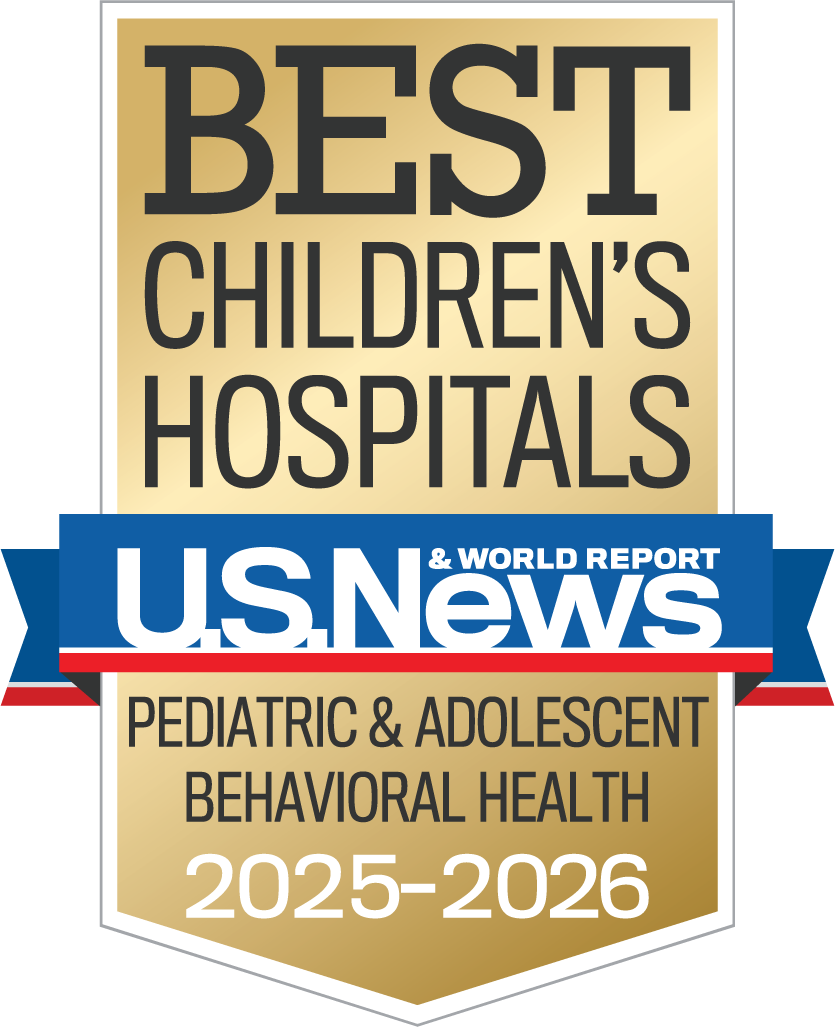
Learn more about CHOC’s Pediatric Mental Health Services
CHOC Hospital was named one of the nation’s best children’s hospitals by U.S. News & World Report in its 2024-25 Best Children’s Hospitals rankings and ranked in the behavioral health specialty.


